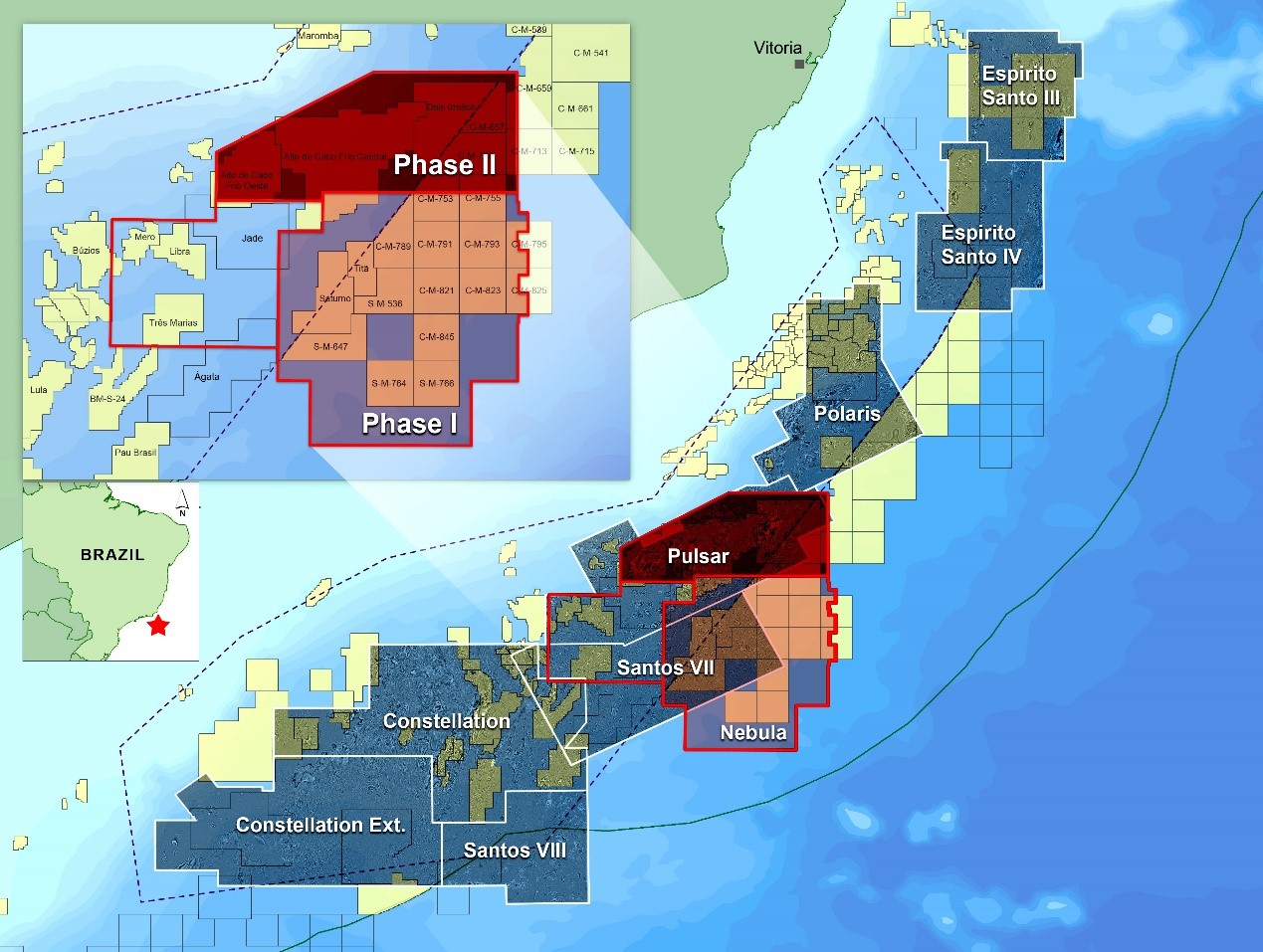CGG Prepares for Nebula Phase II, in Deepwater Brazil
Paris, France | Oct 27, 2020
CGG is pleased to announce that Nebula 3D Phase I is nearing completion and acquisition will soon commence on Phase II.
Nebula 3D is a large, long-offset BroadSeis™ survey located in the prospective Campos and Santos Basins offshore Brazil. Phase I covers approximately 17,700 square kilometers on the southeastern side of the survey area providing 3D data coverage where currently no other 3D data exists. Phase II covers approximately 10,000 square kilometers on the northern side of the survey area with underlying broadband datasets that will provide input for dual-azimuth imaging.
The Nebula Phase II dual azimuth data will better illuminate pre-salt events and address significant challenges posed by thick volcanic layers in this portion of the survey. CGG’s industry leading Subsurface Imaging Center in Rio de Janeiro will employ state-of-the-art processing technology including Interbed Multiple Attenuation and proprietary Time-lag FWI to dramatically improve the velocity model and produce clearer, more focused subsurface images of this prolific pre-salt area.
Commencement of Phase II is expected early December and acquisition will be carried out by Shearwater’s Oceanic Sirius. Fast track results are expected Q4 2021 and final products are expected Q1 2022, which will include a TTI Kirchhoff PSDM, a TTI RTM 45Hz and a LSRTM 45Hz.
Sophie Zurquiyah, CEO CGG, said: “The Brazilian Pre-Salt is the largest worldwide oil discovery in the last decades and it is the most important exploration play in the world, highly coveted by all supermajor oil companies and by new players willing to enter in this prospective sector. This addition to our already very large 3D multi-client library in the Santos and Campos basins underlines our commitment to offering the industry ultramodern data sets to support optimized exploration and development of the entire pre-salt area.”

About CGG
CGG (www.cgg.com) is a global geoscience technology leader. Employing around 3,700 people worldwide, CGG provides a comprehensive range of data, products, services and solutions that support our clients to more efficiently and responsibly solve complex natural resource, environmental and infrastructure challenges. CGG is listed on the Euronext Paris SA (ISIN: 0013181864).